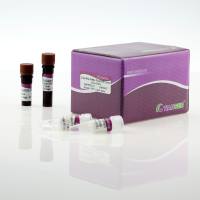Inverse PCR: cDNA Cloning
互联网
781
Since the first report on cDNA cloning in 1972 (1 ), this technology has been developed into a powerful and universal tool in isolation, characterization, and analysis of both eukaryotic and prokaryotic genes. But the conventional methods of cDNA cloning require much effort to generate a library that is packaged in phage or plasmid and then survey a large number of recombinant phages or plasmids. There are three major limitations in those methods. First, substantial amount (at least 1 μg) of purified mRNA is needed as starting material to generate libraries of sufficient diversity (2 ). Second, the intrinsic difficulty of multiple sequential enzymatic reactions required for cDNA cloning often leads to low yields and truncated clones (3 ). Finally, screening of a library with hybridization technique is time-consuming.









